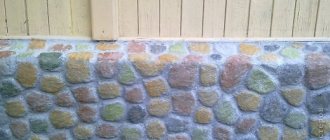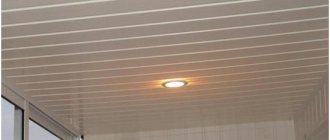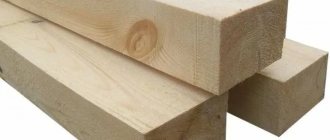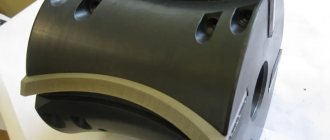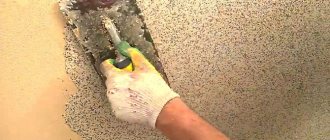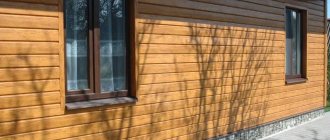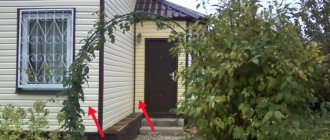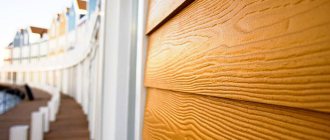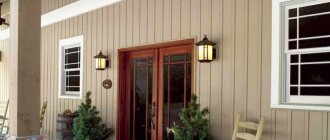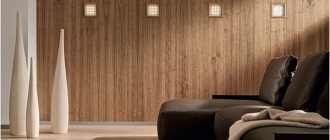What is fiber cement siding?
Fiber cement siding is a ventilated facade made of polymer material. The panels received their name - fiber-cement siding - due to their composition, which is based on artificial or natural fiber (cellulose fibers) and cement. Quartz sand, water and mineral additives are added to them.
The panel manufacturing technology is quite complex, but in a nutshell it can be described as follows. A solution of the above ingredients is mixed, pressed and dried. Panels with a width of 10 to 30 cm are made from the finished material. As a result, they have high strength, fire safety and environmental friendliness.
There are 2 technologies for the production of fiber cement siding:
- autoclave curing
- natural ripening
Autoclave method
Making fiber cement siding involves mixing the ingredients in special drums, then removing excess moisture using a press. The resulting mass hardens in autoclaves under the action of steam and high pressure. At the final stage, the finished material is painted.
The composition of the mixture for autoclave hardening: cement, quartz sand, cellulose fiber and water.
Natural ripening
occurs without temperature influence. After going through the mixing and pressing stages, the material is kept at room temperature for 28 days. For this method of manufacturing fiber cement siding, a mixture of cement, synthetic (polyvinyl chloride) fiber, lime and water is used.
Different manufacturing methods produce different textures. The autoclave method allows you to imitate almost any natural material. And as a result of natural maturation, it produces its own, authentic texture, with pronounced fiber fibers and a rough texture.
Price
Now let's see how much siding costs from the manufacturers listed above in the winter of 2022:
READ ALSO: Wood-look metal siding - a stylish and reliable façade cladding
| Brand | Cost in rubles |
| Nichiha 14x455x1000 mm | 1700 |
| Latonite 8x200x3600 mm | 700 |
| Eternit 190x3600 | 730 |
| Cedral 0.684 m2 | 700 |
| Kmew 1m2 | 1 850 |
Siding from the Russian manufacturer Latonit is not inferior in quality to foreign analogues
- Fiber cement siding
- Siding Manufacturers
Types of fiber cement finishing
The shape of finishing materials made of fiber cement can be made in the form of siding or panels.
Fiber cement siding imitates natural wood. Depending on the type and method of installation, it can imitate lining (a board with a chamfer) or planken (a flat board).
Fiber cement panels have the shape of rectangular slabs, imitating stone or brickwork, less often - plastered walls.
Fiber cement trim can be coated with glass-ceramic, which gives it extra strength and an attractive appearance. But this option is more expensive. It’s cheaper to choose uncoated material.
For the plinth, compacted panels with increased strength are made. But in general, all these materials are called fiber cement siding.
Main components
Fiber cement is a composite material. The main components used in its production are:
- dense fibers (fiber);
- mineral fillers;
- cement holding the structure together.
Fibers are obtained by impregnation with special solutions (zinc chloride, sulfuric acid, calcium thiocyanate) and further pressing several layers of paper or cardboard from pulp and wood pulp. Due to the random arrangement of cellulose fibers, the fiber has high bending resistance; it prevents linear mechanical stretching and thermal expansion of the material, performing a reinforcing function and being responsible for the rigidity of the finished slabs.
Below you can see the appearance of fiber cement panels:
Here you can view the full catalog of KMEW fiber cement panels..>>
The use of fillers facilitates the design and improves the performance characteristics of the panels: it imparts internal plasticity, increases elasticity and flexibility. Cement is responsible for the strength and moisture resistance of products. This production allows us to obtain a very durable, yet lightweight and flexible material.
Advantages of fiber cement siding
Innovative production technology and carefully selected composition allow us to achieve a truly high quality final product. In terms of strength, this finish is not inferior to stone, so it could be called stone siding.
There are quite a lot of advantages of fiber cement finishing:
- The combination of cement and cellulose fibers gives the material high strength, rigidity and at the same time ductility.
- Due to the fairly large thickness - 10-12 mm - and the fact that the panels are not hollow inside, they do not “walk” or bend if you lean your elbows or lean something heavy against the wall.
- Fiber cement siding is waterproof. In addition, it is resistant to aggressive environments, so it can be installed in houses by the sea, in regions with high humidity and precipitation.
- Fiber cement is not susceptible to infection by fungi and other microorganisms.
- The panels can be used at temperatures of -40… +60 °C. And if they have a glass-ceramic coating, this range increases to -50... +80 °C. In addition, siding is resistant to sudden temperature fluctuations.
- The frost resistance of the panels is, on average, 200 cycles.
- Fiber cement siding is resistant to ultraviolet radiation, does not fade in the sun and retains color fastness for up to 10-15 years.
- Panels can be cut and repainted. To do this, use a special paint based on acrylates.
- Fiber cement siding has fairly high sound insulation.
- The panels do not support combustion.
- Siding is environmentally friendly.
- This finish looks attractive. A wide range of colors and textures allows you not to be limited when choosing the appearance of the facade of the house.
- The siding installation process is dry, without the use of adhesives or mixtures. Therefore, you can decorate your house with it at any time of the year.
- Fiber cement panels do not require special care. Resistant to active substances. They can be washed with non-abrasive detergents or simply with a hose.
And, of course, fiber cement siding also has its disadvantages:
- High price. This siding is more expensive than its plastic or metal counterpart.
- Difficult to install. As the owners of houses finished with fiber cement siding admit, in order to do all the work yourself, you need to study the instructions on 100-150 pages. Since the material is quite expensive, it is more economical for home craftsmen to order professional installation, which, by the way, is quite expensive.
- Difficulties with components. According to the owners of fiber cement facades, there are certain difficulties in purchasing original components. Some order kits from abroad on their own, others install siding using their own technology, making do with the materials that are available.
History of creation
Fiber cement began its existence at the end of the 19th century.
At that time, the developing industries required heat-resistant and non-combustible building materials; there were none of those existing then. The inventor of the high-temperature-resistant fibrous cement material was Ludwig Gacek.
- owner of
the First Austro-Hungarian Asbestos Factory
. For several years, he experimented with ordinary asbestos cement, introducing additional components and additives into its composition.
Fiber cement created on the basis of asbestos fibers has successfully passed tests for fire resistance and resistance to high and low temperatures.
Fiber siding had high resistance to bending and tearing, was strong, durable and wear-resistant. Another undoubted advantage of fiber cement was its relatively low cost.
Gacek made a breakthrough in roofing technology by starting the production of fiber cement panels. Much lighter weight and higher strength than conventional tiles have made them highly popular in construction.
New technology came to Russia at the beginning of the 20th century, when the Bryansk plant of fiber cement boards “Terro-phazerit” was opened. Here fiber cement was produced using Austrian technology based on asbestos cement.
Due to their advantages, fiber cement panels were widely used throughout the world until 1976.
They stopped using Gacek’s invention due to the receipt of new information about its toxicity and harm to human health, when scientists suggested that asbestos cement contributes to the occurrence of cancer.
After this, European companies first reduced the use of asbestos cement in construction, and then completely stopped the production of fiber cement using asbestos technology.
In 1981, the Asbestos Cement Trade Association signed an agreement to permanently cease its production.
However, fiber cement manufacturers did not completely abandon the versatile and inexpensive material and in subsequent years actively sought a replacement for harmful asbestos fibers.
Modern technologies and numerous studies have helped to find completely safe analogues. Cellulose, basalt, aramid and other fibers are widely used as reinforcing fibers.
It is important! Modern fiber cement is a material that is absolutely harmless to human health and is not inferior in chemical, technical and operational properties to its asbestos-containing predecessor.
Installation of fiber cement siding
Fiber cement siding can be attached directly to walls, without sheathing. But this installation method has limitations: it excludes the possibility of using insulation, and the walls must be perfectly smooth.
The second option is installation using a lathing made of timber or a metal profile. In this case, a ventilated facade is obtained, and the walls under the finishing can “breathe”. If necessary, install insulation in the gap between the wall and the cladding.
In general, the installation is identical to the installation of other types of ventilated facades. Siding can be easily cut using available tools, but manufacturers recommend using a circular saw with a dust extractor. And the joints and ends can be painted over.
The installation process is divided into 4 stages:
- Installation of horizontal sheathing. The installation step depends on the size of the panels. The planks are attached using self-tapping screws.
- Laying the heat insulator. The most commonly used is mineral wool. It is secured using dowels or anchor nails. Then the heat insulator is covered with a protective waterproofing film, which is fixed with a construction stapler.
- Installation of vertical sheathing. Step – no more than 60 cm.
- Installation of fiber cement siding. The work begins from the bottom, where the starting strip is installed, then the first panel is mounted and all subsequent ones are overlapped (the width of the “overlap” is at least 30 mm).
It is worth considering that fiber cement siding is heavier than its plastic and metal counterparts. Therefore, even if you decide to install it yourself, you will have to invite one or two assistants.
Experts recommend cutting fiber cement siding outdoors, wearing a protective mask and gloves. The dust that is generated when cutting this material contains silicon dioxide. It settles in the lungs, causing severe illness. By the way, this dust is also harmful to the tool, so it is better not to use new grinders. And settling dust should be removed immediately.
Wood
Lately it has become less popular. It is made from natural wood, which is glued together with resin under high pressure. The material looks great, but requires special care throughout its life.
But even these measures will not protect against insects and rodents, which really like wood. The price of wooden siding is high, which is one of the reasons for the decline in popularity. When using this type of finish, you need to pay special attention to fire safety, because wood is highly flammable.
There is an alternative!
If you do not want to breathe in harmful substances during work or overpay for cladding, you can finish the facade with vinyl or acrylic siding. It has almost all the same advantages as fiber cement panels:
- does not support combustion;
- moisture resistant;
- not susceptible to infection by fungi and pests;
- resistant to temperature changes;
- can be installed both in the summer heat and in winter at sub-zero temperatures;
- withstands temperatures from –65°C (for example, “Alaska” vinyl siding from Alta-Profile) to +80°C (acrylic siding “Canada Plus” from Alta-Profile);
- resistant to UV radiation, does not fade in the sun (acrylic siding does not change color throughout its entire service life);
- you can choose panels to suit every taste: siding imitating wooden facades, or facade panels imitating stone, brick and tile.
Plus, plastic siding is more than 10 times lighter than fiber cement siding, making it easier to transport and install.
Below is a comparative table of the characteristics of fiber cement and plastic (vinyl and acrylic) siding.
| Characteristic | Fiber cement siding | Plastic siding |
| Facade type | Ventilated facade | Ventilated facade |
| Maximum temperature range | -50… +80 °С | -65… +80 °С |
| Strength | Very durable and tough material. | Less rigid than fiber cement siding, but quite reliable and durable. |
| Resistance to moisture, temperature changes, fungal infection | Stable | Stable |
| Weight | Quite heavy. On average, one panel weighs 11-12 kg. | More than 10 times easier. |
| Color fastness | High color fastness, does not fade in the sun. | Acrylic siding is resistant to fading thanks to Cool Color painting technology. |
| Installation | Quite simple, but requires careful study of the instructions. Installation requires help, but it is better to contact specialists. When cutting panels, you need to use protective equipment to prevent dust from getting into your lungs. | You can install it yourself. During installation and operation it does not emit harmful substances (subject to the availability of appropriate certificates from the manufacturer). |
| Accessories | Some manufacturers do not have all the necessary components. In such cases, you have to make do with improvised means. | You can purchase a complete set of materials for facade finishing from one manufacturer. |
| Maintenance during use | Does not require special care. | Does not require special care. |
In addition, finishing the facade with plastic siding will cost several times less than fiber cement siding. And if you use foam siding (for example, Alta-Board from the Alta-Profil company), the houses will be practically indistinguishable from the outside.
Advantages and disadvantages of the material
When heated by sunlight, the material does not release harmful components into the surrounding air, so its use is safe for health.
Advantages of cement and fiber siding:
- durable panels last about 50 years, while the original color remains for 15 years, after which gradual fading from ultraviolet radiation begins;
- the material is not afraid of severe frosts and summer heat;
- dust and dirt do not accumulate on the surface;
- fiber cement is not destroyed by water, corrosion, and does not rot;
- the flammability of the finishing layer is zero;
- looks good next to other types of building materials;
- home heating costs are reduced.
Installation is carried out on the sheathing.
Installation of cement-fiber boards is carried out like other types of siding on the sheathing, so this method is common and simple. You can do it yourself without involving specialists.
In its basic version, cement siding is inexpensive, but after installation the surface must be treated with paint and varnish, which will make the cladding more expensive. Fiber cement has an impressive weight, so when finishing an existing building, you need to strengthen the foundation.
Care is required during transportation, as long panels are fragile and can crack if stored carelessly.
You won't be able to saw the product by hand; you need to use a power tool. It is difficult to screw self-tapping screws into the material, so pre-drill holes 0.5 mm smaller than the diameter of the hardware.
Where to buy from the manufacturer?
The LOBAS company offers a wide range of facade tiles and siding at manufacturer's prices. The plant has been producing various products from reinforced high-strength concrete for about 20 years and is valued by a large number of customers for high quality products, reliability and strict fulfillment of contractual obligations.
All products are manufactured in accordance with current GOSTs and SPs, and have the necessary certificates and quality certificates.
You can place an order on our official website or by calling our toll-free number: 8 (800) 333-16-86. Our specialists will help you choose the material suitable for your purposes and advise on cost and delivery methods.
We supply products wholesale and retail. We work with both large manufacturing companies and small businesses and individuals. We provide favorable discounts to regular and wholesale customers. We organize delivery of goods purchased from us by transport companies to any city in Russia, Belarus and Kazakhstan.
How much does façade cladding cost: prices for cement siding and labor costs
The cost of materials and work on facade cladding depends on:
- construction region;
- materials used;
- installation method;
- complexity of the work.
Prices for cement siding in Nizhny Novgorod and Moscow range from 970 to 1,460 rubles.
The table shows an approximate calculation of the cost of work and expenses for installing suspended ventilated facades:
| Name of work and costs | Unit change | Cost of materials | Cost of work |
| Installation of a metal subsystem on brick or reinforced concrete | m2 | from 330 | from 320 rub. |
| Insulation of the facade with mini-slab | m2 | from 165 RUR | from 200 rub |
| Wind protection device | m2 | from 35 rub. | from 60 rub. |
| Siding installation | m2 | from 860 RUR | from 250 rub. |
| Installation and dismantling of scaffolding | m2 | from 90 rub. | |
| Scaffolding rental | m2 | from 30 rub. | |
| Total total | m2 | 1420 rub. | from 920 rub. |
According to the above calculations, the estimated cost of hinged ventilated facades on a metal subsystem ranges from 2,340 rubles.
